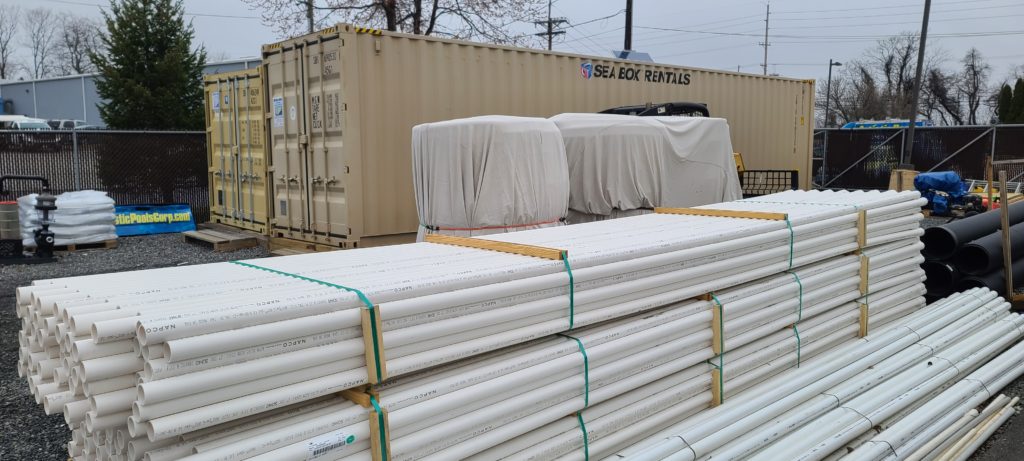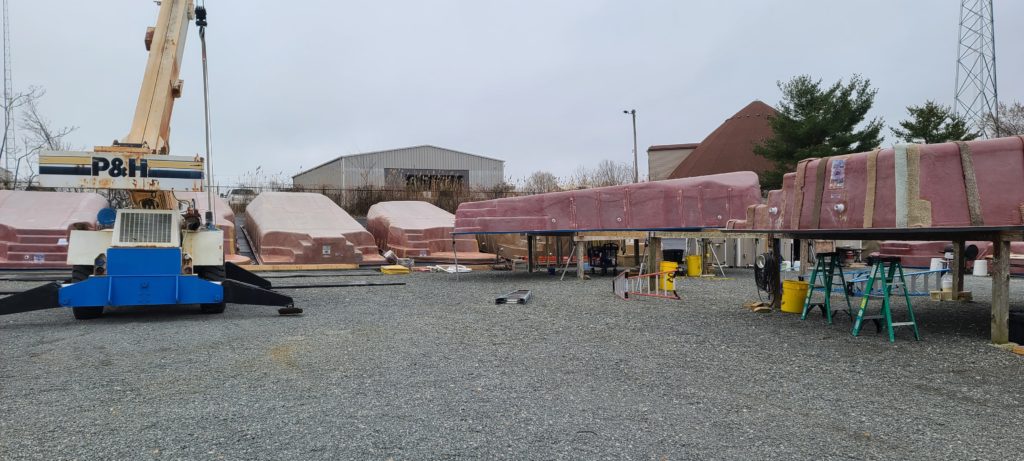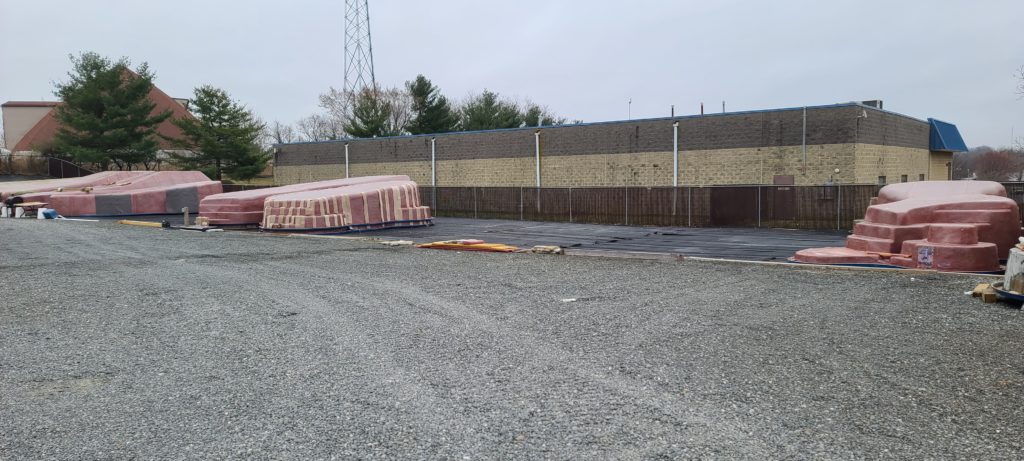
Attention Artistic Pools 2021 customers. It has come to our attention that the Texas Freeze has caused major setbacks in the production of raw materials to make Fiberglass Pools, Boats and just about everything in the Plastics market. San Juan and many suppliers have declared Force Majeure which is… unforeseeable circumstances that prevent someone from fulfilling a contract. Having said that Artistic Pools is currently on Schedule with all Pool installs to the beginning of May. The resin shortage will affect San Juan and the rest of the country as soon as April 1st and for how long that will last is unknown at this time. There will be delays in projects for us beginning approx May 3rd as we will run out of Pools until San Juan is back up and running with the necessary materials needed to supply the market.
Throughout our 18 years in business a shortage of Pools has never happened. San Juan has been at the forefront of Fiberglass Pool manufacturing since 1958. As soon as materials become available they will begin manufacturing again and at that point we will be able to communicate how far behind projects will be. Just know San Juan is a huge player in the market and when materials become avail they will begin running at full force and creating the most beautiful hand laid pools we have all come to expect.
We understand this delay will be a minor setback for everyone including our Crew at Artistic Pools. Artistic Pools is one of the nations largest consumer of Fiberglass Pools and this setback is very hard for everyone involved. We have 27 employees which are Family and close friends who have been part of our team for 18 years. Our #1 Priority is to keep our employees working and our customers up to date with the info needed once it becomes available.
Letter of Delays and Rising prices facing our industry from San Juan Pools

Letter from Main buying group about resin shortages and price hikes
Dear Friends:
No one wants to be the bearer of bad news and, since that seems to have been the subject of many of my recent communications, I’m sorry to be doing it again. However, I would be surprised if your company is not already struggling with the joint battles of securing needed outboards, hardware and materials together with the challenges of rising prices. I have shared insights and concerns about these issues for several months, but recent events have increased my anxiety.
Because of the importance, complexity, and potential seriousness of unfolding events, I will go into more depth than you may want to read. However, I think it is important that you understand some of the challenges which will continue to impact our industry’s supply chain.
We are really confronting two primary challenges – cost vs. availability. In some cases, rising costs are related to availability in terms of limitations of supply, but they are also being impacted by increased shipping costs (both international and domestic) and currency exchange rates. Add to these the impact on chemical based materials including rubber, plastics, paints and coatings, resins, gel coats, catalyst, acetone, styrene, etc., which have been adversely impacted by the recent weather events in some southern States and along Texas and Gulf Coast. It is more than a coincidence to call this a “perfect storm,” because this latest event may have far reaching impact upon an already difficult business environment.
Since I have touched on the international shipping problems in the past, I will not dwell on them here. Suffice to say that these issues should improve as the international threat of Covid diminishes. However, domestic shipping costs will increase in response to higher fuel prices which will continue to be driven by increased consumption as the economy returns to normal. As people increase their driving, more fuel will be used and costs will increase. Likewise, as business moves toward normalcy, the demand for industrial freight will rise and diesel fuel and transport costs will increase.
The weakening Dollar relative to other currencies will increase the cost of foreign goods and this is generally related to our poor handling of Covid, compared to the pace of recovery of many other countries, particularly in Asia, from which we import many of our materials. This will come into better balance over time, but, for the short term, it may get worse before it gets better.
The issues of international supply of key raw materials are more troubling. Because of rapid economic growth in much of Asia, there was already a shortage of many raw materials. This impact has been complicated by unforeseen events like the more shut-down of much of the U.S. chemical industry along our Gulf Coast due to weather and power failure in Texas.
Some of these events have a compounding effect. Extremely high demand for fiberglass and core materials in China are limiting global availability. These issues are compounded by increased tariffs, high shipping costs and rising currency exchange rates. When these factors are coupled with high demand in the US, product availability and pricing are becoming a serious problem.
Realizing that these issues will touch a variety of foreign and domestically sourced materials, I am going to focus much of this memo on the composites industry, which is facing an unprecedented crisis with respect to material supply and rising prices. However, the impact on many of the petro-chemical based composites products may similarly impact domestically produced polymer products like sheet plastic, vinyl, polyester and nylon fabrics, injection molded plastics, etc.
I believe it is important that we try to get everyone on the same page and help you understand the challenges so you can address these issues as effectively as possible. We face several unrelated and challenging events, which are coalescing simultaneously and threaten to create significant problems for the near future. How you manage these problems will, in part, determine how seriously your production is impacted over the next several months.
Material Supply – For the first time in my experience, we are looking at situations which are making it increasingly difficult to secure a broad range of products. Part of this relates to production capacity issues. In the case of fiberglass and core materials, there is simply more global consumption than there is available capacity. Much of this is driven by the extremely robust wind energy market in China. This “may” begin to improve at the end of March when Chinese government tax incentives are scheduled to expire. If these incentives are not renewed, it is likely that there will be a slowdown of the Chinese wind blade production and this will free up raw material for the entire global composites industry. This production cannot readily come from other countries. While the Chinese companies have added production capacity in the Middle East and South America, most of this production is dedicated to Europe and the regions where they are produced. Regardless of source, gun roving is the most difficult challenge. There is virtually no surplus gun roving anywhere in the world and adding significant fiberglass production capacity is a long-term undertaking.
With the exception of very limited production in Europe, the US, Mexico and Canada, Taiwan, Japan, Korea and India (which is largely consumed internally), virtually all the roving production comes from China, Brazil or the Middle East. To avoid Chinese tariffs, production of added value products like woven roving, chopped strand mat, combomat and knitted fabrics has been expanded to Vietnam, Thailand and Myanmar, but almost all of this production utilizes Chinese input roving. These companies are also struggling to get enough raw material.
As previously explained, one of the major global suppliers of epoxy, based in Korea, exploded and was destroyed. This put an enormous strain on epoxy availability, which is a primary backbone of vinyl ester resin production. Global supply was already very tight before the recent problems in Texas. Now, it is unclear whether there is adequate supply of epoxy available to meet VE demand, regardless of substantial increases in price.
Polyester resin production was tight because of high demand and shortages of key raw materials like DCPD used in laminating resins. Recent interruptions of resin plant production in Texas and Arkansas have greatly impacted the capacity issue, but the loss of production of key raw materials like styrene and maleic acid, glycols, DCPD, etc. have severely disrupted the supply chain. Resin producers cannot even project production timetables because they cannot confirm availability of key raw materials.
Acetone is under enormous supply pressure. Again, even before the problems in Texas where most US acetone is produced, supply shortages were driving rapidly higher prices. Now, with production in Texas impacted, prices are further spiking, but availability is becoming a serious challenge.
MDI and polyols utilized to produce urethane floatation and flexible seating foam were already in short supply before the problems in Texas. One of the largest producers, BASF, had already declared “force majeure’ voiding all contractual production obligations because of supply issues. After the problems in Texas, all five major manufacturers declared “force majeure” and cancelled their delivery contracts.
The largest market for core materials is the wind energy business and, like fiberglass, global supply was already taxed by consumption in China. For synthetic foams, raw material supply was already an issue. However, since virtually all of production is foreign, rising raw material costs, coupled with the shipping issues and currency exchange rates have contributed to costs and extended delivery times.
Shipping delays and rising costs are a major contributor to all of these problems. This has not gotten better and, in some cases, has gotten worse. Even if there were no material supply issues, the extended shipping delays would add significantly to the supply problems for foreign sourced materials. Combined with the availability issues this greatly complicates the supply problem.
Material Pricing – Prices are now being impacted by three dynamics at the same time – rising raw material costs, rising exchange rates for imported products or raw materials and increased shipping costs including both domestic and global shipping and logistic costs.
Six months ago, acetone was selling as low as $.60/lb. Today, the price is as high as $2.00 and rising! As if the price is not troubling enough, the product is being allocated!
Vinyl ester pricing has increased approximately $.50/lb since the first of the year and is preparing to rise further, but for the moment, orders cannot even be confirmed.
Gun roving pricing has gone through the roof. Forgetting the fact most sellers cannot even provide it, pricing has risen as much as $.40/lb.
All fiberglass materials have sky-rocketed in price and have increased as much as $.30-$.60/lb.
Polyester resins and gel coats have had at least two increases since the first of the year and are preparing to rise further.
Core materials have all increased and are scheduled to rise further.
Like other chemical-based products, adhesives, putties and catalyst is facing similar increases and further increases will be driven by their raw material content.
As noted previously the cost of raw materials for urethane-based products are rising rapidly and all sources are allocating limited product after imposing substantial price increases.
The Big Unknowns? – It is an unfortunate analogy to think of the recent weather events in Texas and the Gulf Coast as a “perfect storm,” but the reality is that the result was the creation of a three-headed dragon, which will be a challenge to overcome. In the past, disruptive events were like a localized storm which temporarily shut down one or more refineries. Or, perhaps, a fire or explosion at a primary or intermediate chemical plant. However, in this case, multiple plants in all categories are impacted.
For instance, if refineries cannot produce benzine, then primary chemical companies cannot produce styrene. If refineries cannot produce phenol, there is no acetone by-product, etc. Likewise, for DCPD. However, this assumes that even if the refineries were back to full production, the primary chemical manufacturers are functioning, which many are not. Regardless, even if the primary chemical manufacturers are functioning, then their materials and those of the refiners are required by the intermediate chemical manufactures to produce other required components. For the first time ever, all were impacted by loss of power, burst pipes and boilers, etc.
To resume full production of resin and other products, we need all three of these sub-industries to be functioning. Some base materials may be foreign-sourced, but even if product was in the pipeline, there would not be enough to offset the loss of domestic production and it will add cost. Regardless, as production is resumed, what will be the impact of the costs which each component of the supply chain will pass through? Material prices were already rising rapidly. Limited supply and high cost of down time and plant repairs will almost certainly add substantially to these material increases.
Minimization of Impact on UMMA Members –
Fortunately, business for most of our Members is quite good. This will help them to absorb some of the rising costs, providing you can get materials to sustain production. Today, this is an uncertain. Collectively, UMMA and Spectra represent a significant block of business and can command a certain amount of consideration in terms of production and allocation priority. To this extent, we are using all of the leverage we can. However, if the products are simply unavailable, there is little that anyone can do.
Logic would tell us that this is a temporary condition and that we should see continued incremental improvement as each of the obstacles are overcome. Unfortunately, this is a highly unusual fact situation and no can definitively predict the course or timeline which these events will follow.
I encourage you to be conservative and to be realistic. I have already suggested that you to pass through pricing increases and since it is likely that some of these problems may persist for at least several more months, you should take this situation into consideration in your model year pricing.
In the meantime, we will continue to do all we can to mitigate the impact of all of these events upon our builders and, where possible, to help our suppliers to manage their own raw material needs as well as their own rising costs. In turn, we hope to maintain priority in terms of pricing and supply for UMMA Members as we all work together to minimize the impact of these challenges upon your supply chain.
Again, I apologize for the length. Thank you for all of your support and understanding.
Best regards,
Kent Wooldridge
President
P.S. As I proof-read this memo, I just received two notices from Polynt and INEOS announcing further production delays and major pricing increases.
In addition to unknown supply and lengthening lead-times, Polynt just announced increases of $.16/lb. on all resins, gel coats, pigments and putties and $.25 on vinyl ester resins, effectively March 15!
INEOS just announced an increase of UP TO $.16 on all resins and $.12 on gel coats, effective April 1.
It is unknown whether the full amounts of these increases will necessarily apply to UMMA, but I am just making you aware.

Letter From main Supplier of Resin to build pools in the US

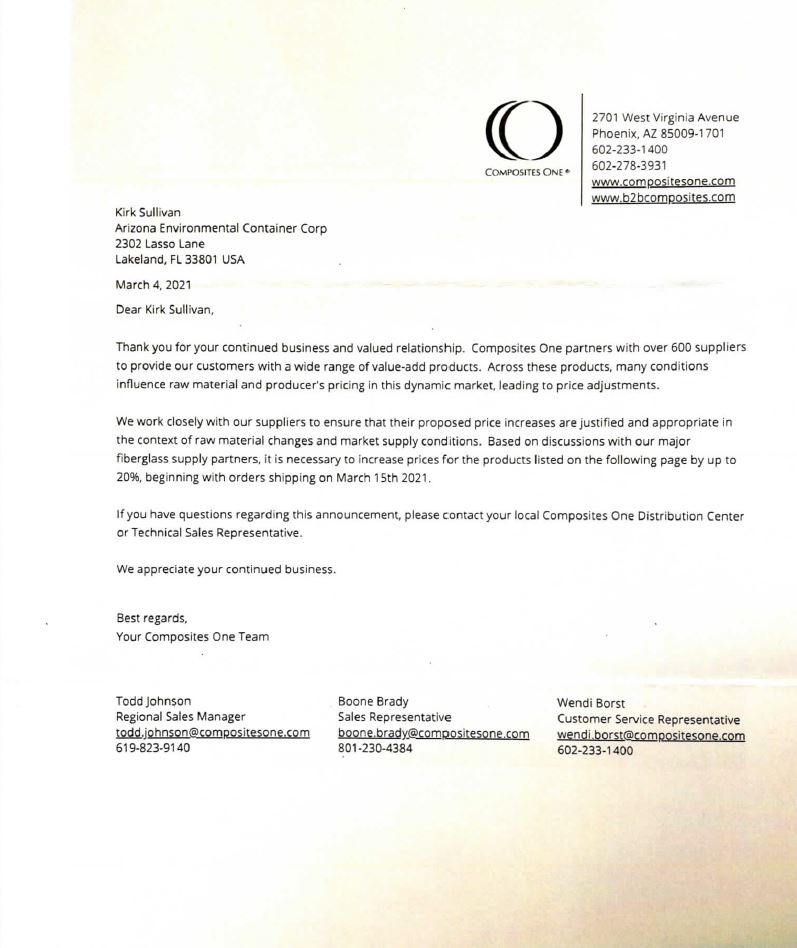
Plastics Shortage and rising pricing
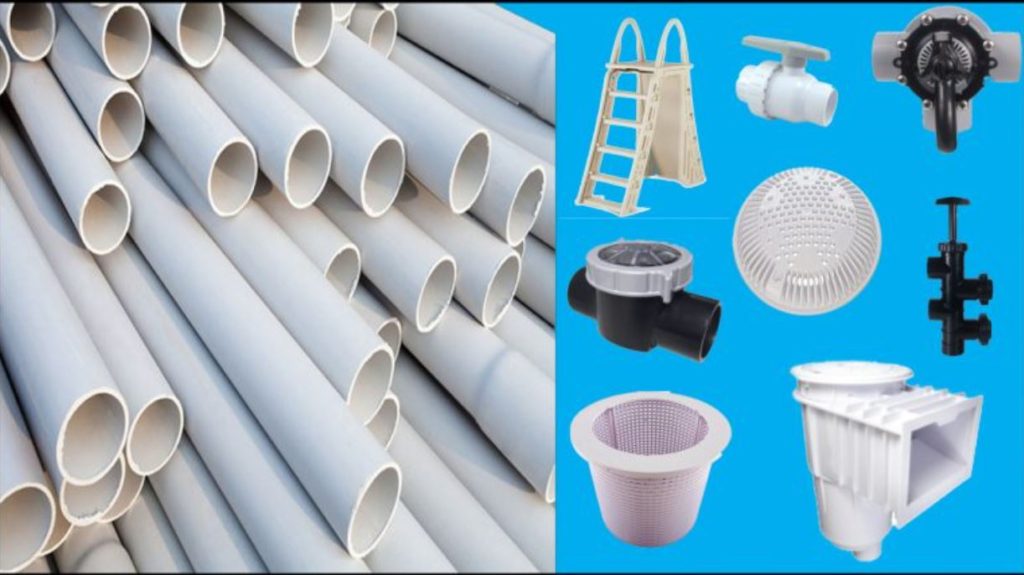
Pool industry fears widespread shortages of essential plastic parts after Texas freeze – PVC, plastic parts supply jeopardized
Article below from Service Industry News Click here
The pool industry may be facing a dramatic reduction in products made from plastics.
The aftermath of February’s brutal Texas storm and power outages resulted in widespread damage — crippling domestic plastic production.
The power outages brought Texas’ petrochemical complex, America’s hub for the raw materials for plastic, to its knees.
New York-based Confer Plastics, a manufacturer of pool ladders, steps and spa accessories, has been the first to sound the alarm. They simply can’t get enough plastic materials to make their products. They’ve already been forced to lay off 40 employees and expect more to follow.
Among countless other plastic reliant companies, Confer Plastics said they will not be able to deliver products planned or scheduled. According to the company’s vice president Bob Confer, this is something they have never done before — in their 48 years of business, even with 1970s oil embargoes, the Blizzard of ’77, the Great Recession and Covid.
Confer explains how the plastics disaster unfolded as follows:
In Texas, business operators, like homeowners, were given little to no notice about the widespread shutdown of the (power) grid and the institution of rolling blackouts. Those most affected were the petrochemical companies. Among them were those that make polyethylene and polypropylene, the most commonly used plastic materials.
In a region where hurricane impacts are common, material producers can plan for that. You know a hurricane is coming, you shut down in advance. The sudden and prolonged electrical outage caught everyone off guard and now they are suffering the consequences. Had ERCOT (the Electrical Liability Commission serving Texas) given advance notice of its strategies, resin plants could have disabled their facilities accordingly. Instead, that flick of the switch happened while everyone was still in full operation.
The damage has been significant. Water and steam, used to crack the carbon molecules, froze inside equipment.
The raw materials that were going from gas to solid or had already become so stopped moving. Machines were damaged and pipes were gummed up. It’s so bad that many of the pipes throughout those vast industrial complexes have to be cleaned out manually; and that’s no easy undertaking, as it seems like there are miles of pipes there.
The majority of resin plants won’t be back online until the first week of April.
According to the Wall Street Journal, citing S&P Global Platts, the freeze in Texas, which is one of largest exporters of plastics and other petrochemical products, stopped production of 75% of polyethylene, 62% of polypropylene and 57% of PVC. Texas produces about 85% of the U.S.’s polyethylene, the most widely used plastic in the world.
Now, Confer says his company is being told that resin supplies won’t be normal for another four to six months.
He expects that it will be a stressful time for everyone in the pool and spa industry, impacting everything made out of plastic, from equipment to accessories to spas to pool toys.
Lacking plastic to make containers, store shelves could become empty of cleaning supplies, threatening the availability of liquid chlorine for pool disinfection and sanitation.
This confluence of elements, in an industry already struggling with equipment and chlorine shortages, may dovetail into a perfect fiasco pool season in 2021.
The pool and spa industry is just one of many industries affected by this crisis. The plastic shortage has in fact disrupted the world-wide supply chain for consumer goods.
It has and will continue to impact everything from the auto industry to smart phones, building materials to medical supplies – if it’s made out of petrochemical materials, it is in short supply.
According to the Wall Street Journal, prices for polyethylene, polypropylene and other chemical compounds used to make auto parts, computers and a vast array of plastic products have reached their highest levels in years in the U.S.
In February and March, automakers announced plant shutdowns and production cuts because of the shortages of chips, components and plastics, and damage to the assembly plants during the winter storm.
To name a few, Honda, Toyota, GM, Ford and Tesla all temporarily halted production at some or most of their assembly plants.
Meanwhile, Samsung and NXP semiconductors, both with plants in Austin, were forced to shut down operations during the storm, exacerbating a chip shortage that had already prompted the car makers to curtail output.
Within the construction industry, builders are being told to expect shortages of everything, from PVC to siding to adhesives to insulation. And paint maker PPG Industries Inc. said a number of its suppliers were affected by the problems in Texas.
All of this is going to cost the unwitting consumer, the vast majority of whom may be as yet unaware of the scope of this crisis.
Because of the supply and demand war, Confer says his company’s plastic’s materials currently cost over three times what they did a year ago. That will get passed on to retailers, who will then pass it on to consumers after their mark-up.
Now, think of everything we buy that is made or stored in plastic.
“The impact is significant and it is one that will roil the national economy’s waters for months,” Confer said.
Artistic is buying all the white goods and supplies we can
Since the shortage hit the market on all plastics such as PVC pipe, Plumbing fittings, Skimmers, Drains, Return fittings, electrical conduit, Pumps, Filters, Heaters as well as everything else plastic… Artistic Pools has been sourcing materials at a rapid pace. The shortage is so bad we are left driving 100s of miles to buy equip needed to build pools. Below is proof we are doing what’s needed to slow the process of delays once pool manufacturing is back in full force.
